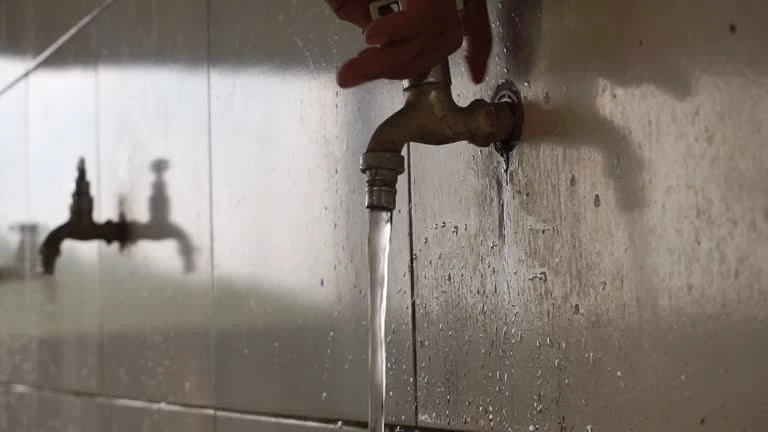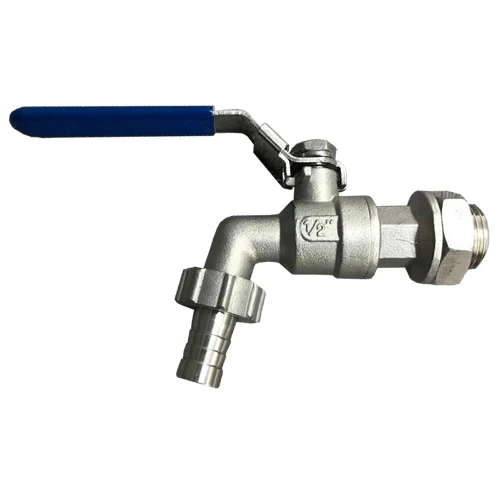Winter can be a harsh season for homeowners, particularly when it comes to outdoor plumbing, One of the most vulnerable areas of your home’s plumbing system is the outside faucet, or spigot. If temperatures dip below freezing, the water inside the faucet or the pipes leading to it can freeze, expand, and cause serious damage to the plumbing, potentially leading to leaks and expensive repairs.
Fortunately, protecting outside faucets from freezing doesn’t have to be a costly or complicated task. With the right precautions, you can safeguard your faucets and ensure that they remain functional throughout the winter months. This article will guide you through practical steps to protect your outside faucets from freezing, from simple DIY solutions to more advanced methods.
Why Do Outside Faucets Freeze?
Before we dive into the solutions, it’s important to understand why outside faucets freeze in the first place. When cold weather sets in, any water left in an outdoor faucet or the connecting pipes can freeze. Water freezes at 32°F (0°C), and as it freezes, it expands. This expansion creates pressure on the faucet and the pipes, which can cause them to crack or burst. When the frozen water thaws, the pipes may leak or even break, leading to expensive water damage.
Outside faucets are especially vulnerable because they are exposed to the elements, unlike indoor pipes that are protected by walls and insulation. To prevent costly repairs, it’s crucial to take steps to protect these outdoor water sources.
How to Protect Outside Faucets from Freezing
Disconnect and Drain Garden Hoses
One of the simplest and most effective steps in protecting your outside faucets from freezing is to disconnect and drain your garden hoses before the temperature drops. Leaving a hose attached to your outdoor faucet can trap water inside, which may freeze and block the flow of water. A frozen hose can also damage the faucet itself.
How to do it:
- Disconnect the hose from the faucet and drain any remaining water.
- Store the hose indoors in a dry location where it won’t freeze.
- Once the hose is removed, open the faucet to allow any remaining water in the pipe to drain out.
This step helps ensure that water doesn’t get trapped in your faucet or hose, reducing the risk of freezing.
Install Outdoor Faucet Insulation Covers
Outdoor faucet insulation covers are one of the easiest and most affordable ways to prevent freezing. These covers are designed to fit over your faucet, providing an extra layer of protection against the cold. They are typically made of foam, which helps insulate the faucet and prevent freezing.
How to do it:
- Purchase an insulated faucet cover from your local hardware store or online.
- Place the cover over the faucet, making sure it fits snugly around the spigot.
- Some covers have a Velcro strap or drawstring to keep them in place during windy conditions.
Insulated faucet covers are effective for protecting faucets in areas where temperatures don’t drop too low. They’re also quick to install and can be reused every winter.

Shut Off the Water Supply to Outdoor Faucets
If you live in a particularly cold region, turning off the water supply to your outside faucets is one of the best ways to prevent freezing. Many homes have a shutoff valve inside the house, typically in a basement or crawl space, that controls the water flow to outdoor spigots. Shutting off the water supply ensures that no water remains in the pipes connected to the faucet, which eliminates the risk of freezing.
How to do it:
- Locate the shutoff valve for the outside faucet inside your home (usually near the water meter or in the basement).
- Turn off the valve to stop the water supply to the faucet.
- Once the water is shut off, open the faucet to let any remaining water drain out.
- Leave the faucet open to allow any water in the pipe to escape and prevent freezing.
Shutting off the water supply is an effective way to prevent freezing, especially if you won’t be using the outdoor faucet during the winter months.
Use Heat Tape or Cable
For homeowners living in colder climates, heat tape or heat cables are an excellent option for preventing freezing. Heat tape is an electrical device that you wrap around the pipe leading to your outdoor faucet. It heats up to keep the pipe above freezing temperatures and prevent ice from forming inside.
How to do it:
- Purchase heat tape or heat cables from a hardware store or online.
- Wrap the heat tape around the pipes leading to the outdoor faucet, following the manufacturer’s instructions.
- Plug in the heat tape, ensuring that it’s working properly and keeping the pipes warm.
Heat tape can be used in combination with other protective measures, such as faucet covers, for added protection during extreme cold spells.
Insulate the Pipes Leading to the Faucet
If the pipes leading to your outdoor faucet are exposed to the elements, insulating them is an essential step to prevent freezing. Insulation helps to keep the pipes warmer by providing a barrier between the cold air and the pipe, reducing the chances of freezing.
How to do it:
- Use foam pipe insulation, which is available at most hardware stores. It comes in pre-slit tubes that are easy to install around the pipes.
- Wrap the insulation around the expos pipes leading to your faucet, ensuring that the entire length is covered.
- Secure the insulation with tape or zip ties to keep it in place.
- If you have a longer stretch of exposed pipe, consider using heat tape in conjunction with the foam insulation for added protection.
Pipe insulation is a simple and inexpensive way to keep your outdoor plumbing safe from freezing.
Install a Frost-Free Outdoor Faucet
If you’re building a new home or replacing an old faucet, consider installing a frost-free outdoor faucet. These faucets are specifically designed to prevent freezing. They feature a long valve stem that extends into the warmer areas of your home, ensuring that the water supply is shut off inside the house, not at the faucet.
How to do it:
- Hire a plumber to install a frost-free faucet, which involves replacing the standard faucet with one that has a longer valve stem.
- The plumber will install the faucet so that the shut-off valve is inside the heated portion of your home, far enough away from the exterior wall to avoid freezing.
While installing a frost-free faucet requires a bit of work and upfront cost, it provides long-term protection against freezing and can save you the trouble of covering and insulating your faucet every winter.
Seal Gaps and Cracks Around the Faucet
Cold air entering around the faucet or through cracks in the wall can increase the likelihood of freezing. Sealing any gaps or cracks around the faucet and its pipe can help to keep cold air out and prevent freezing.
How to do it:
- Inspect the area around the faucet for any gaps or cracks in the wall or siding.
- Use caulk, spray foam, or weatherstripping to seal any openings.
- Pay special attention to areas where the faucet pipe exits the wall, as these are particularly prone to drafts.
Sealing gaps and cracks is a simple yet effective way to reduce the risk of freezing and to increase your home’s overall energy efficiency.
Conclusion
Protecting your outside faucets from freezing is an essential task to prevent costly plumbing repairs and water damage during the winter months. By taking a few simple steps—such as disconnecting hoses, installing faucet covers, insulating pipes, and shutting off the water supply—you can ensure that your outdoor faucets remain functional and safe from the cold. In more extreme climates, investing in frost-free faucets or heat tape can provide additional protection.
By preparing your outside faucets for winter, you’ll save yourself from the headache of frozen pipes and enjoy peace of mind during the colder months.
Frequently Asked Questions (FAQ)
How do I know if my outside faucet has frozen?
If you try to turn on the faucet and no water comes out or only a trickle flows, it’s likely frozen. You may also notice frost or ice around the faucet or pipe.
Can I leave my outdoor faucet exposed during winter?
It’s not recommend to leave outdoor faucets expos during winter, as they are prone to freezing. Proper insulation and covering are crucial to prevent damage.
Is heat tape safe to use on outdoor pipes?
Yes, heat tape is generally safe for use on outdoor pipes, provided you follow the manufacturer’s instructions. Be sure to check the tape regularly for signs of wear or damage.
Can I use a foam faucet cover for all types of outdoor faucets?
Foam faucet covers work for most standard outdoor faucets, but they may not be sufficient for extreme cold temperatures. Consider using additional insulation or shutting off the water supply if you live in a particularly cold climate.
Do frost-free faucets need additional protection?
Frost-free faucets are design to prevent freezing, but in very cold climates, adding insulation or sealing gaps around the faucet can provide additional protection and extend the faucet’s lifespan.


















